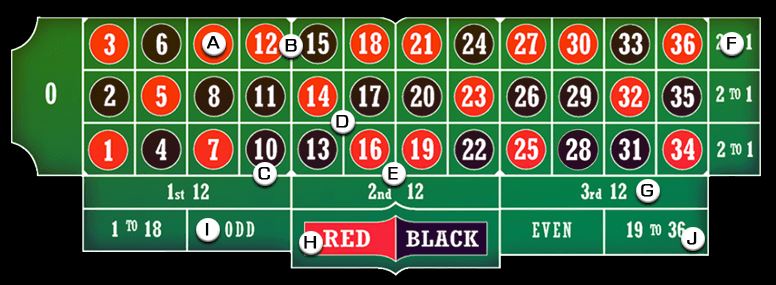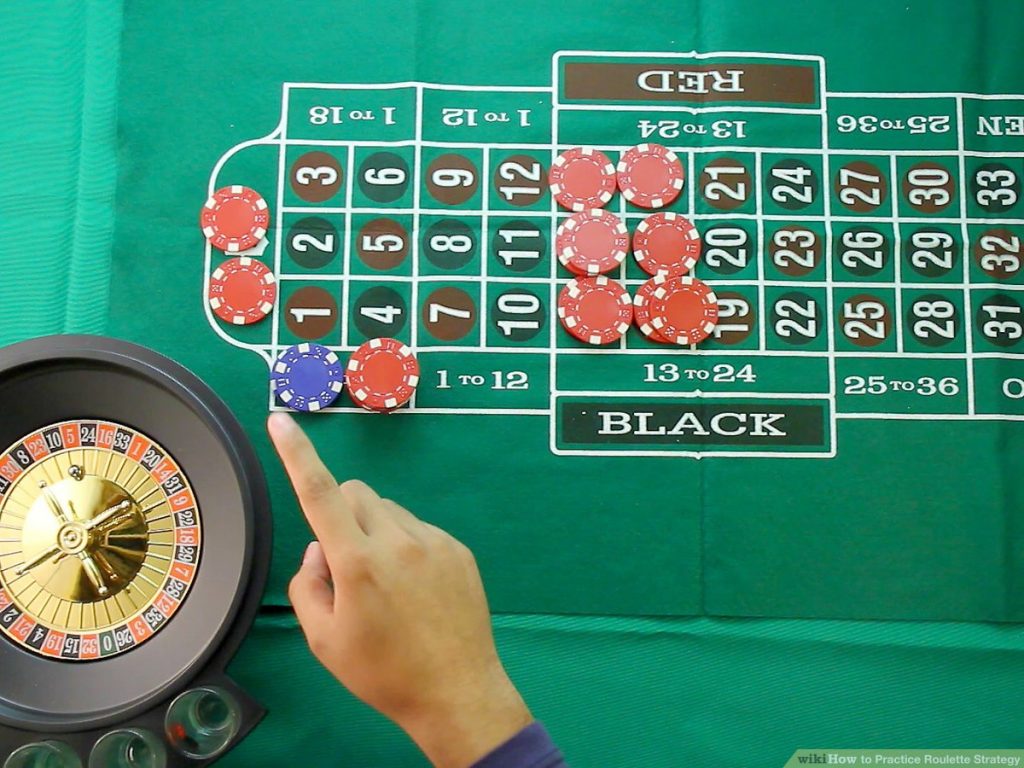The 3 main Roulette Strategies
A ball that spins in a roulette wheel and falls into a square with a number and a colour. That is basically the game of roulette and with it dozens of strategies have appeared that claim to know how to win roulette. Actually, this kind of $pean roulette strategies are valid only as a way of playing, but they do not guarantee you a guaranteed success.
That is why, despite the fact that there are websites that claim to have a strategy with which they ensure success, this is not the case. Chance counts.
There is neither a magic formula nor casino roulette strategies to always win but there are ways of playing that many experts recommend to follow. For this reason, we give you 10 $s for free to try these strategies.
1. Roulette Strategies: Martingale

It is one of the most famous roulette strategies and can be used not only in online casino, but also in betting and other games of chance. One should bear in mind that using Martingale in betting as a valid system as well. This roulette strategy was born in France in the 18th century and consists of betting a fixed amount on the initial bet and in case of loss, doubling this amount bet until our bet is won.
In this way, we will have achieved as a profit the amount we put as our initial bet when we started playing roulette. It is used in single bets as double or nothing: red-black, even- odds, etc.
We can explain it more clearly with an example of a game:
- First Step:
We bet 1 $ on black. If we win, we repeat the same step. If we lose, we go to the next step. - Second Step:
We bet 2 $s on black (double the previous one). If we win, we go back to step 1. If we lose, we go to step 3. - Third Step:
We bet 4 $ on black (twice as much as step 2). Again, if we win we start again, and if we lose, we go to step 4. - Fourth Step:
We bet $8 on black (twice as much as step 2). As in the previous step, if we win we start again, and if we lose, we go on to step 5. - Fifth Step:
We double again the bet: 16?. Whether we win or lose, we go back to step 1. If we won on the last step, the winnings would be 16?, while the losses would add up to 1+2+4+8 = 15?. We will have won 1 $, the equivalent of the initial bet.
2. Roulette Strategies: D’alembert
This method to win in roulette is based on the Law of Equilibrium, developed by the French mathematician of the same name in the 18th century. It consists of adding a betting unit after a failure. In the same way, the same amount is subtracted if you are right. It is one of the most used $pean roulette strategies or systems in the casino and it is also known as the Pyramid system. It is a betting system for players who want to keep a certain number of bets and losses to a minimum.
- 1st Step:
First bet. We bet 1 chip and lose. Loss: -1 Net: -1 - 2nd Step:
We add a unit. We bet 2 chips and lose. Loss: -2 Net: (-1-2) =-3 - 3rd Step:
We add another unit. We bet 3 chips and win. Winning: +3 Net: (-1-2+3) = 0 - 4th Step:
We subtract one unit. We bet 2 chips and win. Winning: +2 Net: (-1-2+3+2) =+2 - 5th Step:
We lower the bet another unit. We bet 1 and lose. Loss: -1 Net: (-1-2+3+2-1) =+1 - 6th Step:
We add a card. We bet 2 and win. Winning: +2 Net: (-1-2+3+2-1+2) =+3
The D’Alembert system is designed so that, at equal numbers of winning and losing moves (balance), the final result offers a positive balance equal to the number of winning moves in the series. In this case, the win is 3 units, which is the number of times we have won or lost.
Examples of gusts
- Alternate earnings (G, G, P, G, P, P, G, P, G, G, P, G). A profit of 7 units is expected.
- Alternative losses (P, P, G, P, G, G, P, G, P, P, G, P). A loss of 2 units is expected.
- Consecutive gains (G, G, G, P, P, G, G, P, G, G, G, P). A profit of 7 units is expected.
- Consecutive losses (P, P, P, G, G, P, P, G, P, P, P, G). A loss of 6 units is expected.
- Good run (G, G, G, G, P, P, G, G, G, G, G, ). A profit of 10 units is expected.
- Bad streak (P, P, P, G, G, P, P, P, P, P, P). A loss of 34 units is expected.
3. Roulette Strategies: Fibonacci Sequence

Roulette strategy created by Leonardo Pisano Bigollo, who was popularly known as Fibonacci. He was a famous mathematician born in 1170. He became famous for discovering the sequence of numbers known by his name and in which each number is the sum of the two previous numbers: 1-1-2-3-5-8-13-21-34-55-89-144-233-377-610.
It can be applied as an electronic roulette strategy in the following way: Start by betting a small amount on a single bet (black/red, even/odd or 1-18/19-36). If you lose, continue with the sequence. That is to say, if you have bet one $ and you lose, you bet 1 $. If you lose, you bet 2 $ (1 $ + 1 $ = 2 $). When you win, you must go back to two bets in the sequence described and bet that amount. But it’s much easier to understand with this example with a round with won and lost bets and its development in the Fibonacci strategy:
- Bet on black, $3, result: you lose;
- Bet on black, 3 $s, result: you lose;
- Bet on black, 6 $s, result: you lose;
- Bet on black, 9 $s, result: you lose;
- Bet on black, 15 $s, result: you win;
- Bet on black, 6 $s, result: you lose;
- Bet on black, 9 $s, result, you win;
- Bet on black, 3 $s, result, you win;
- Bet on black, $3, result, win -3 -3 -6 -9 +15 – 6 + 9 +3 +3 = +3.
In this way, despite the fact that 5 bets were lost for 4 won, a profit of 3 $s was achieved.
Roulette strategies: conclusions
In short, there are strategies that offer a certain guarantee that the results of the online casino, specifically in the electronic roulette strategy, will be more positive than without these tactics. But as we always say, there are no definitive casino roulette strategies. They are aids, not a sure way to win at roulette.